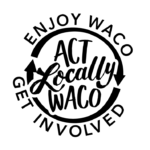by Dena Quigley
October 15th is National Pregnancy and Infant Loss Remembrance Day. Did you know? Five years ago, I was completely and blissfully ignorant. But since then I’ve learned that one in four women will have a pregnancy that ends in either a stillbirth or a miscarriage… one in four! That means when I go to dinner with three friends, one of us should expect such a loss. Multiply that by several tables of women and this number quickly increases. It’s an unpopular conversation starter for sure, but occasionally we need to be made uncomfortable so that we can be made aware.
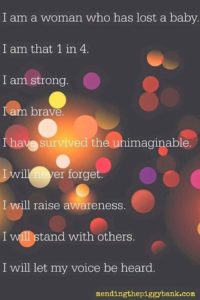 Jay Neugeboren writes, “A wife who loses a husband is called a widow. A husband who loses a wife is called a widower. A child who loses his parents is called an orphan. There is no word for a parent who loses a child. That’s how awful the loss is.” As a mother who has lost her daughter, I can relate to his words and I can attest to the loneliness that comes with such a loss. At Cradled, we often refer to the loss of a pregnancy as a “silent sorrow.” Not everyone can or is willing to relate to such a loss. I’ve had friends literally and figuratively turn their backs on my grief, leaving my husband and I to not only pick up the pieces of our tattered hearts, but to seek out and find new community. I am fortunate that I found Cradled by Love, Hope and Healing, a local group that provides support and resources for women and families experiencing the loss of a baby through miscarriage, stillbirth, early infant loss, and infertility. They gave me shelter to express my fears and sadness, and the support and love I needed to move forward.
Jay Neugeboren writes, “A wife who loses a husband is called a widow. A husband who loses a wife is called a widower. A child who loses his parents is called an orphan. There is no word for a parent who loses a child. That’s how awful the loss is.” As a mother who has lost her daughter, I can relate to his words and I can attest to the loneliness that comes with such a loss. At Cradled, we often refer to the loss of a pregnancy as a “silent sorrow.” Not everyone can or is willing to relate to such a loss. I’ve had friends literally and figuratively turn their backs on my grief, leaving my husband and I to not only pick up the pieces of our tattered hearts, but to seek out and find new community. I am fortunate that I found Cradled by Love, Hope and Healing, a local group that provides support and resources for women and families experiencing the loss of a baby through miscarriage, stillbirth, early infant loss, and infertility. They gave me shelter to express my fears and sadness, and the support and love I needed to move forward.
At Cradled, we are not happy to meet you or have you attend a support group, because that means you have suffered as no parent should suffer. But we will meet you in your grief and loss and walk with you through your journey. We offer empathy, and are willing to climb down into the hole with you, partake in your silent sorrow, and share our experiences along with other practical techniques to help ensure that you won’t be in the hole always. For some families this journey is relatively short, and for others who come to Cradled, we walk a mile, and then a mile more, and another if needed. It is an honor to be with them.
To the other three women who never experience a loss, we, the one in four, celebrate your successful pregnancies with you. You deserve happiness and joy through the life of your baby. All we ask is that you do not forget our babies. Our babies meant just as much to us as yours do to you. We understand that it is difficult to know what to say, but sometimes “I’m sorry, I will always remember” is just enough.
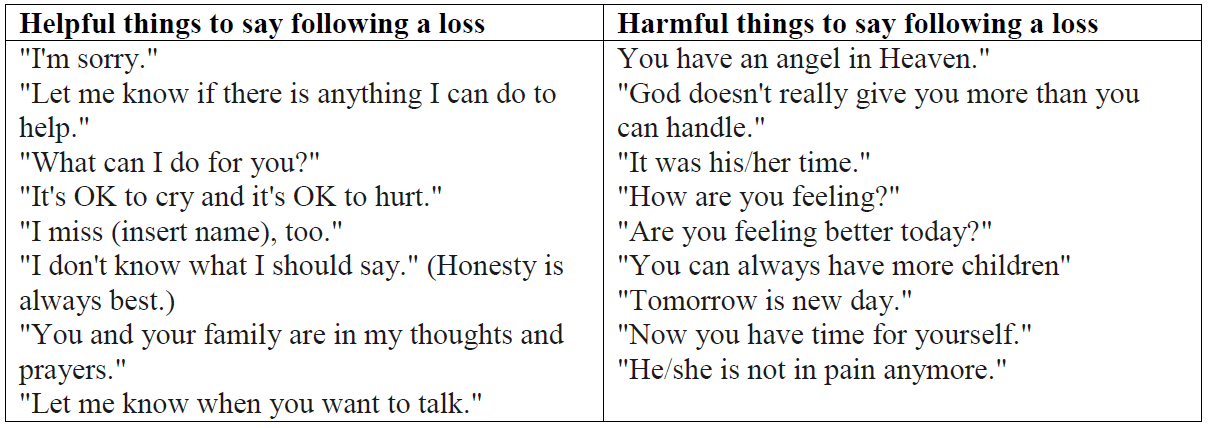
If you, or someone you know, is one in four, please know that Cradled is here for you. If your loss was yesterday, last year or last decade, we are ready to listen to your story. Please visit our website at Cradled.org for more information about upcoming events and support groups.
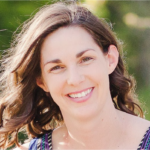 Dena Quigley is a recent graduate of Baylor University having earned her PhD in Education. She is a wife and a mother of two beautiful boys on earth and a daughter in heaven. She has been a volunteer with Cradled by Love, Hope and Healing since 2013, and regularly co-leads support groups and is currently help to develop new curriculum.
Dena Quigley is a recent graduate of Baylor University having earned her PhD in Education. She is a wife and a mother of two beautiful boys on earth and a daughter in heaven. She has been a volunteer with Cradled by Love, Hope and Healing since 2013, and regularly co-leads support groups and is currently help to develop new curriculum.
The Act Locally Waco blog publishes posts with a connection to these aspirations for Waco. If you are interested in writing for the Act Locally Waco Blog, please email [email protected] for more information.
By Jenuine Poetess
This past weekend I traveled back home to Los Angeles to celebrate the Quinceañera—15th Anniversary—of Tia Chucha’s Centro Cultural. I became involved with this centro in 2009 and within this community, my authentic, whole self was born and raised. It was there I first called myself a poet, an artist, a community organizer. It was there I learned how to use the arts as a tool for transformation—personally and throughout a city and beyond. It was there I forged bonds with mentors who have become family. It is there where I found home, and safe space to explore, discover, and become my genuine self.
I founded In the Words of Womyn (ITWOW) in 2010 and the original writing circle continues at Tia Chucha’s today. At the circle I attended on Friday evening, I met a young woman who had been coming to circle for two years since she was 16 years old. She shared with me how much the space meant to her, that when she first attended, she was too shy to read her own work; that she didn’t really believe in herself; that she didn’t know how to use her own voice. Now, she writes with bold bravery and shares aloud. I witnessed her receive an award at the quinceañera for her completion of an internship program—a program she said she never would have had the courage to apply for had she not been a part of the ITWOW circle.
That evening I joined another poet and musician as co-features for the weekly open mic event at Tia Chucha’s. I watched this artist thriving in her creative practices and thought about the years ago before she was empowered to speak her truths and indulge in her love of son jarocho music and dance. We shared the stage together—her playing while I recited a poem—and we celebrated our journeys into becoming ourselves.
On Monday I lead a womyn’s writing circle in El Sereno, Las Lunas Locas which was founded by an alumna of ITWOW two years ago. I see the abundant fruits of these creative labors yielding nourishing harvests year after year in this place I call home.
And I consider all we have planted and grown in Waco since I arrived in 2012. I once made a family tree of all the programming, events, publications, and opportunities that have been born out of my experiences at Tia Chucha’s. And while Sylmar, CA and Waco, Texas are 1400 miles apart, these two communities hold my heart, and are the locations of my creative investments. I think about the ways community arts programming shaped, inspired, and prepared me to come to Waco and to do the work I have been doing—alongside so many other diligent community organizers. I work with intention to create similar safe spaces for people to explore, create, and thrive into their exquisitely diverse identities.
In the four years I have been here collaborating with others we have celebrated the birth of programs like: Waco Poets Society, Heart of Texas ITWOW, Central Texas Artist Collective, Black Poets Society, and Yellow Chair Press. We have grown the annual WCAF WordFest from a handful of events on one afternoon to a full-grown festival spanning three days. I brought the 100Thousand Artists for Change event to Waco and for the first time this year Waco artists hosted 2 events in conjunction with this global project. Inspired and encouraged by Waco’s involvement, artists in Lubbock, Texas began holding 100Thousand Artist for Change events and transformed their community using their event as a fund-raiser for a local charity. This summer, inspired by the work of Waco Poets Society and Central Texas Artist Collective, Nicole Metts founded the Copperas Cove Writer’s Society.
I share all of this bounty not to shine the spotlight on myself and my colleagues, but to highlight the creative contagion that can occur when we are diligent to invest in fostering creative sustainability. This is work that attends to the needs of all of us as humans to imagine, to explore, to wonder, and to make. When we create, protect, and sustain safe spaces for this process, we invest into whole-person development, which further enriches our communities.
Supporting the arts at every level—from arts education in schools and colleges, to art galleries and spaces, to grassroots initiatives and programming—is an investment that will yield infinite returns. We are building a creative legacy, one that has the capacity to stretch into countless generations next. We are literally creating abundance.
I celebrate with joy and gratitude, the place from which I come and I look forward with hope and inspiration to continuing the art/work we are making in Waco. These are indeed exciting times. Inside the vast womb of art, we have such a capacity to heal, to nurture, to empower, and to thrive. As we head into a season laden with the giving of gifts, I encourage and challenge you to not only shop locally, but to also support local artists—there will be a number of opportunities to purchase local artisan goods at the Waco Downtown Farmers Market, at Waco Wonderland, and at various other pop-up art stores. Keep in touch and informed with Central Texas Artist Collective for all the details!
 Jenuine Poetess is an artist, visionary, and community organizer. In 2010, she founded In the Words of Womyn (ITWOW), an international, grass-roots, written and spoken-word arts project with chapters throughout Los Angeles, CA; Waco, TX; and Lebanon. Jenuine is the founder of Waco Poets Society and co-founder of the Central Texas Artist Collective. She writes, organizes, and creates rooted in the fierce conviction that holding intentional space, access, and opportunity for all people to foster their creative health is a matter of justice and is a vital asset to the sustainable thriving of communities. She currently lives and poems in Central Texas where she enjoys finding new ways to disrupt the homeostasis of her city. You can contact her at: j[email protected].
Jenuine Poetess is an artist, visionary, and community organizer. In 2010, she founded In the Words of Womyn (ITWOW), an international, grass-roots, written and spoken-word arts project with chapters throughout Los Angeles, CA; Waco, TX; and Lebanon. Jenuine is the founder of Waco Poets Society and co-founder of the Central Texas Artist Collective. She writes, organizes, and creates rooted in the fierce conviction that holding intentional space, access, and opportunity for all people to foster their creative health is a matter of justice and is a vital asset to the sustainable thriving of communities. She currently lives and poems in Central Texas where she enjoys finding new ways to disrupt the homeostasis of her city. You can contact her at: j[email protected].
The Act Locally Waco blog publishes posts with a connection to these aspirations for Waco. If you are interested in writing for the Act Locally Waco Blog, please email [email protected] for more information.
By Rolando Rodriguez Soto
Every college student knows about the dreaded Free Application for Federal Student Aid (FAFSA) they have to apply for each year. This year, big changes to the FAFSA will make it easier for students moving forward.
On Sept. 14, 2015, President Obama announced starting with the 2017-2018 FAFSA, students will be able to file as early as October 1 rather than beginning on January 1. This means the FAFSA for next school year starting in fall 2017 is now open.
Don’t panic! I understand you submitted your previous FAFSA just a few months ago! You are probably thinking, “But I don’t know my 2016 tax information yet!” That’s OK. For this next FAFSA you will be using your 2015 tax information–the same tax information you used on your 2016-2017 FAFSA earlier this year.
Beginning with the 2017-2018 FAFSA, students will be using their parents’ income tax information (as well as the students’ if appropriate) from the previous year, which for this upcoming FAFSA will be the 2015 tax return rather than their 2016 tax return. This means during this transitional year, students will be using the same tax information they used on their 2016-2017 FAFSA earlier this year.
“Previously the FAFSA would open in January, and you would have to use the tax return from the year that just ended, but in January, parents don’t have their W2s yet,” said Jessica McAdoo, MAC & Scholarship Coordinator for the MAC College Money Program. “So a lot of students and parents would have to put an income estimate and go back and update it before the March deadline.”
The new FAFSA availability date will make the financial aid process smoother for students. Since parents and students have already completed their 2015 tax return, it should have been already processed through the Internal Revenue Service (IRS), and they will no longer need to use estimates from the prior year.
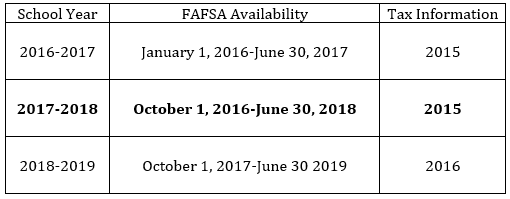
With the new process, students will be able to use the Data Retrieval Tool to upload their tax information directly onto the FAFSA from the IRS. For most students this means they will no longer need to go back and update their estimated figures on their FAFSA. Since FAFSA will be sending schools tax information directly from the IRS, fewer students will need to complete the verification process.
If you are a high school senior, you may still be sending out admission applications, taking tours of campuses or making the decision of where you want to spend the next years of your education. There is no rush. Students do not need to apply for admission to a school before they list it on their FAFSA.
The priority deadline for state aid is still March 15, so be sure to complete the FAFSA process before that date. Some schools may have changed their priority deadline for FAFSA, so check with your prospective or current schools to verify their deadlines.
The Texas Application for State Financial Aid (TASFA) for non-citizens classified as Texas residents has recently announced their application is also now available to students. Similar to the FAFSA, students will also use their 2015 tax return to complete the form for fall 2017.
Your family’s financial situation may have changed since your parents submitted their 2015 tax return and you filed your previous FAFSA (if you are a returning student). You must still report the same tax information from 2015 on your FAFSA.
“If your financial information has changed you may have to file special circumstance or loss of income paperwork with your financial aid office at your school,” McAdoo said.
Federal Student Aid ID
Before students can begin the financial aid process, they will need to create a federal student aid ID (FSA ID). This form of identification replaced the PIN in spring 2015. Rather than using a four-digit number, students and parents will now create their own username and password. If you haven’t logged in to your FAFSA since May 10, 2015, you will need to create an FSA ID before you can access a federal student aid website.
FAFSA made the change to the FSA ID to increase security. The username and password is more secure than a four-digit number. The new FSA ID will also allow parents and students to retrieve forgotten passwords and log in using an email address.
Both the student and one of his or her parent will need to create an FSA ID. The student ID will be used to log in and sign the FAFSA whereas the parent ID will be only be used to sign the FAFSA.
Students and parents can create their FSA ID at fsaid.ed.gov.
MAC College Money Program
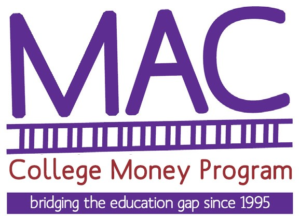 All of this new information on the FAFSA may sound daunting. The MAC College Money Program, a program of Waco Foundation, is available to all students needing assistance with FAFSA, TASFA and financial aid.
All of this new information on the FAFSA may sound daunting. The MAC College Money Program, a program of Waco Foundation, is available to all students needing assistance with FAFSA, TASFA and financial aid.
“The MAC Program helps any student whether you are going to college for the first time or you are returning to college,” McAdoo said. “We fill out the FAFSA at no cost, answer questions about the whole financial aid process, and we are a resource for all students and parents.”
MAC helps 1,500 McLennan County high school graduates annual with the financial aid process. Robbie Stabeno, Director of Scholarships & the MAC Program, and Jessica McAdoo, MAC & Scholarship Coordinator, are available to assist anyone in the county who needs help completing the FAFSA.
If you need assistance, contact the office at (254) 752-9457 to make an appointment.
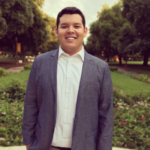 Rolando Rodriguez Soto was raised in Waco, TX, and he is currently attending Baylor University with plans to graduate in December 2016 with a Bachelor of Arts in Professional Writing & Rhetoric. After graduation, he hopes to work in Waco in the nonprofit sector to help realize the full potential of Waco. His long term goals include hopefully creating and publishing creative work whether that is a novel, short story or even a television show.
Rolando Rodriguez Soto was raised in Waco, TX, and he is currently attending Baylor University with plans to graduate in December 2016 with a Bachelor of Arts in Professional Writing & Rhetoric. After graduation, he hopes to work in Waco in the nonprofit sector to help realize the full potential of Waco. His long term goals include hopefully creating and publishing creative work whether that is a novel, short story or even a television show.
The Act Locally Waco blog publishes posts with a connection to these Aspirations for Waco. If you are interested in writing for the Act Locally Waco Blog, please email [email protected] for more information.
By Courtney Restivo Wollard
Did you know that not eating enough fresh produce can lead to poor health problems such as obesity and heart disease? Data shows McLennan County residents don’t eat enough fruits or vegetables.
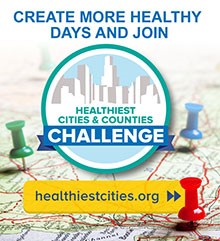 Wacoans are making great strides to eat more fruits and vegetables, so we have been accepted as one of 50 communities to compete in the National Healthy Cities and Counties Challenge to increase healthy eating of fresh produce in order to improve the health of residents. The challenge is a partnership between the Aetna Foundation, the American Public Health Association and the National Association of Counties and will allow for winners able to show measurable change over the course of several years to be awarded prize money for their community.
Wacoans are making great strides to eat more fruits and vegetables, so we have been accepted as one of 50 communities to compete in the National Healthy Cities and Counties Challenge to increase healthy eating of fresh produce in order to improve the health of residents. The challenge is a partnership between the Aetna Foundation, the American Public Health Association and the National Association of Counties and will allow for winners able to show measurable change over the course of several years to be awarded prize money for their community.
We plan to show measurable change by addressing the Healthy Behavior Domain, one of five health domains to choose from, to increase fruit and vegetable consumption in two years by implementing or expanding six programs:
- Offering monthly cooking demonstrations at our local farmer’s market,
- Offering Healthy Soul food and Tex-Mex demonstrations at community centers and churches,
- Adding more locations for The Veggie Van,
- Working with local farmers to get more fresh produce to our food pantries,
- Working with Mission Waco to open a non-profit grocery store featuring low cost healthy foods and nutrition educators on staff, and
- Starting a Community Health Worker Program to connect residents to healthy resources.
The challenge comes at a critical time for Waco. Based on the 2013 Community Health Needs Assessment, 65.7% of adults in McLennan County were considered overweight or obese, and 51% were not eating the recommended servings of produce.
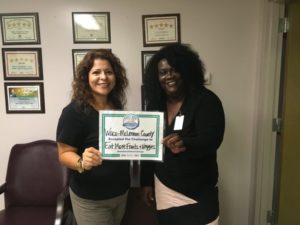 The nine local partners involved in Waco’s Healthiest Cities Challenge are Baylor University, Caritas, Live Well Waco, Mission Waco, Waco Downtown Farmers Market, Waco Foundation, City of Waco, Waco-McLennan Public Health District, and the World Hunger Relief Veggie Van.
The nine local partners involved in Waco’s Healthiest Cities Challenge are Baylor University, Caritas, Live Well Waco, Mission Waco, Waco Downtown Farmers Market, Waco Foundation, City of Waco, Waco-McLennan Public Health District, and the World Hunger Relief Veggie Van.
Waco-McLennan County has accepted the challenge to eat more fruits and veggies! Try to challenge yourself and your family to eat more fruits and veggies!
To learn more about the Challenge, please visit www.healthiestcities.org.
To see the 50 communities selected, click here and find Waco-McLennan County’s section here.
 Courtney Restivo Wollard is a lifelong Waco resident who works as Public Health Education Specialist Lead at the Waco-McLennan County Public Health District and serves as Chair for Live Well Waco, the group working to decrease obesity rates under the Prosper Waco Health Committee Initiative. She is also an alumnus of the Waco Foundation LeadershipPLENTY Institute. Courtney graduated with her Masters of Public Health from Baylor University and right away began her career as a health advocate. She is married to Kyle, with whom she has two fur babies – a Chihuahua and a Labrador. Courtney hopes to continue to create healthier environments for McLennan County residents filled with healthy eating and physical activity opportunities.
Courtney Restivo Wollard is a lifelong Waco resident who works as Public Health Education Specialist Lead at the Waco-McLennan County Public Health District and serves as Chair for Live Well Waco, the group working to decrease obesity rates under the Prosper Waco Health Committee Initiative. She is also an alumnus of the Waco Foundation LeadershipPLENTY Institute. Courtney graduated with her Masters of Public Health from Baylor University and right away began her career as a health advocate. She is married to Kyle, with whom she has two fur babies – a Chihuahua and a Labrador. Courtney hopes to continue to create healthier environments for McLennan County residents filled with healthy eating and physical activity opportunities.
The Act Locally Waco blog publishes posts with a connection to these aspirations for Waco. If you are interested in writing for the Act Locally Waco Blog, please email [email protected] for more information.
By Hope Mustakim
September 22, 2016 –
Today I sat in a room with 10 professionals from various agencies as they thoughtfully coordinated how to best serve some of the brightest yet most needful students of Waco ISD. This partnership follows a wrap-around concept in student transitions from Wiley Opportunity Center (“Alternative” or DAEP) and the Brazos High School Credit Recovery Center, back to their home campus. I observed as these passionate, astute individuals collaborated to provide holistic care for those students who demonstrate conduct that hinders them from succeeding in a traditional school setting- and often, in the “real world,” too. Most striking to me was how the students were spoken about- their privacy was respected, they were not blamed or resented, and they were not seen as “problem” kids, but children who had socio-emotional needs that for whatever reason weren’t being met. The meeting was solutions-oriented and hopeful.
Most (if not all) of these students want to be successful; what child does not? Their young lives are full of potential for restoration and achievement. With that in mind, this group of social workers, mental health professionals, and school administrators balanced the coordination of student services with the importance of parental inclusion, education, and support, recognizing the impact that the family unit has in the restoration of the child to his or her home campus and their overall success in society.
The continuum of care includes things like: on-campus crisis intervention, “triage” and case management, life skills training, intensive therapy for those dealing with trauma, and weekly check-in visits by the child’s home campus administrators. This group also shared ways students can be celebrated when they return to their campus and how they can be supported in applying their new skills to the traditional school setting. This team recognized that all children should be celebrated. And these children, with the right supports, can contribute to our campuses in ways that we don’t even realize we’re lacking.
I was incredibly inspired as I listened to this workgroup strategizing and witnessed their labor of love. A few times tears welled up in my eyes, because I know that any one of these students – by chance, by choice, or circumstance – could be my child. To see the level of humility, determination, and commitment from this partnership at Waco ISD deepened my love and appreciation for Waco and everything that makes it wonderful. #wacoiswonderfull
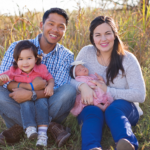 Hope Mustakim is a Community Practice graduate student intern for the BEAR Project- a collaboration between the Garland School of Social Work (Baylor) and Waco ISD. She is a mother of a toddler and an almost-toddler, and wife to an incredibly supportive partner as they pursue the good work of Loving thy Neighbor. Hope is an active member of the Waco community with experience in education, policy advocacy, and community organizing.
Hope Mustakim is a Community Practice graduate student intern for the BEAR Project- a collaboration between the Garland School of Social Work (Baylor) and Waco ISD. She is a mother of a toddler and an almost-toddler, and wife to an incredibly supportive partner as they pursue the good work of Loving thy Neighbor. Hope is an active member of the Waco community with experience in education, policy advocacy, and community organizing.
By Christina Helmick
Every time I’m asked to give my feedback, a little voice in my head says, “what will you do with my feedback? Will it be used to inform the next steps?” I feel like so many have these same thoughts after being asked for feedback. And the skepticism is understandable. If feedback is constantly asked for, but not used to inform the work, then why would people keep giving feedback? This question was at the forefront of our minds when we created the discussion-based breakout sessions at the 2016 Prosper Waco Summit.
On Sept. 19, more than 500 community members came together at the Waco Convention Center from 4-8PM for the 2016 Summit. During the event, participants heard a brief overview of the initiative’s history, along with some of the efforts currently being implemented in the Waco community and what community partners are involved in those efforts. Following the opening session, participants were strategically placed in three different rooms to ensure cross-sector representation of Education, Health and Financial Security were at each table.
During the breakout sessions we asked participants to talk amongst their table, and then the larger room, about solutions our community can implement to address the community’s goals. We worked hard to compile the feedback from the different breakout rooms. You can click here to read all of the feedback compiled from the breakout sessions, and if you view the pictures below, you can see the solutions that were identified more than once throughout the rooms.
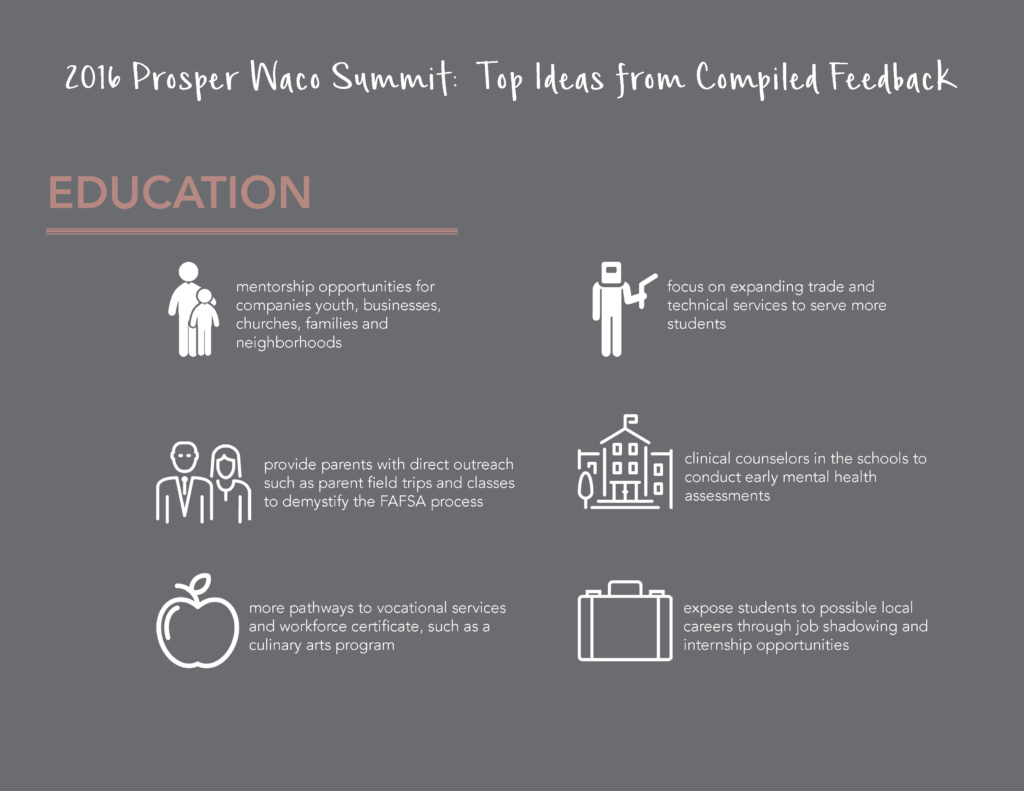
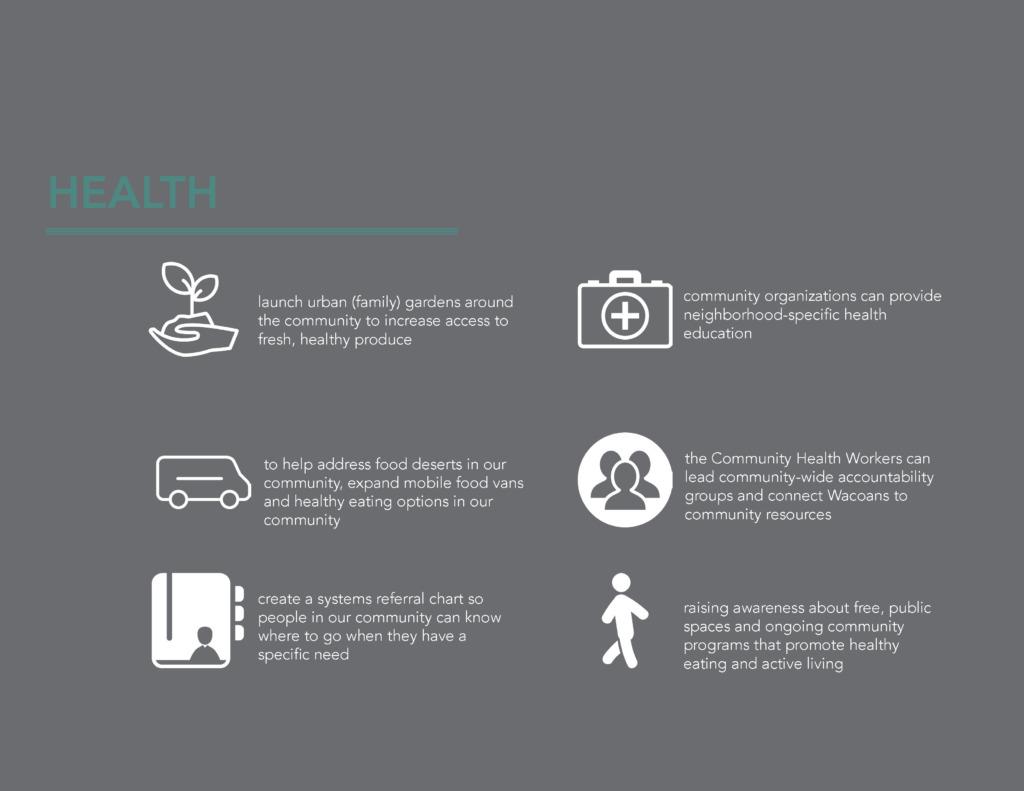
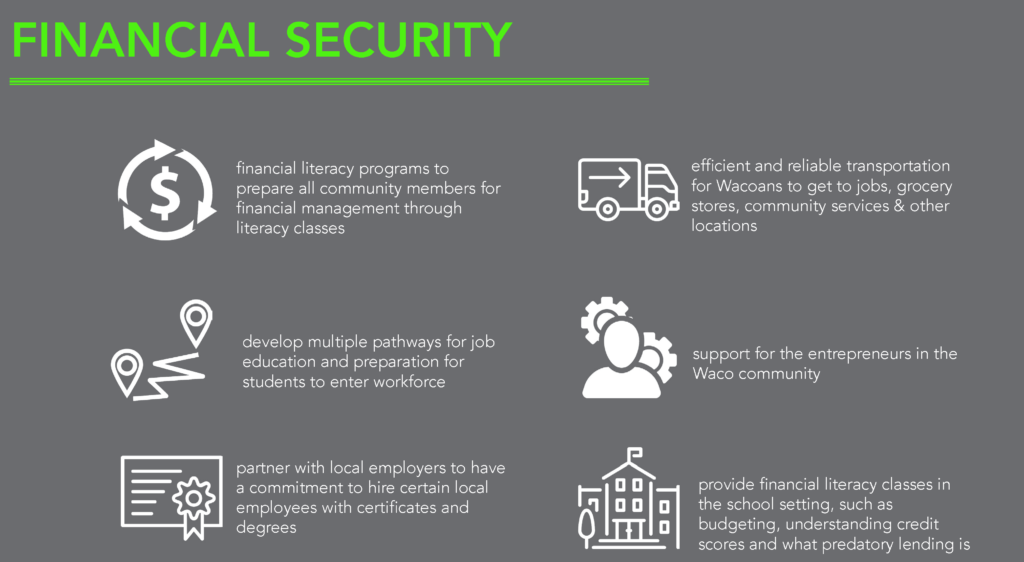
It is important to remember that the above solutions weren’t the only solutions people identified! With more than 500 community members identifying solutions, there were some solutions that appeared across all three rooms, which we captured in the above diagrams.
So the burning question remains…what will be done with this feedback?
Post the Summit, all three Steering Committees met to debrief about the event. During the meetings, committee members reviewed a document that captured all of the feedback, along with a separate document that had solutions that were specific to Education, Health and Financial Security. Some of the solutions crossed one or more strand of the initiative, which furthers the notion that the three aims of the initiative are interconnected.
After having small table discussions, the floor opened up for discussion around what support will be needed from the community to implement some of the solutions identified. Steering Committee members identified bringing other partners to the table, funding and learning more about existing programs in the Waco community as different types of support that would be needed. The feedback captured at the Summit will also be used to inform the work of the working groups by connecting what the community has identified as a solution to the work that is being implemented within the initiative.
We will also utilize the community’s feedback to help inform the work of our Community Engagement Council. During the house meetings the council hosts, they ask for thoughts and perspectives about the solutions identified during the Summit. The Council will continue to ask community members about their personal ideas and solutions to reach the community’s goals by 2020.
We understand not everyone was able to come to the Summit and voice their thoughts, ideas and solutions, which is why we welcome (and strongly encourage!) you to send us your thoughts by contacting us via email [email protected] or calling 254-741-0081.
As always, this work is driven forward by the hard work of our community and there is always an open door for you to become involved and share your thoughts. If you’d like to become involved, email Jillian or call 254-741-0081.
 Christina Helmick is the director of communication at Prosper Waco. She is a recent graduate of Baylor University with a BA in Journalism, Public Relations & New Media. Originally she is from Washington, D.C., but has stayed in Waco post-graduation. She is an active mentor at J.H. Hines Elementary School, enjoys spending time with her family and watching Baylor football. Sic ’em Bears!
Christina Helmick is the director of communication at Prosper Waco. She is a recent graduate of Baylor University with a BA in Journalism, Public Relations & New Media. Originally she is from Washington, D.C., but has stayed in Waco post-graduation. She is an active mentor at J.H. Hines Elementary School, enjoys spending time with her family and watching Baylor football. Sic ’em Bears!
The Act Locally Waco blog publishes posts with a connection to these aspirations for Waco. If you are interested in writing for the Act Locally Waco Blog, please email [email protected] for more information.
By Courtney Restivo Wollard
I am the Public Health Education Specialist Lead for the Health Education Program at the Waco-McLennan County Public Health District and for the past two years, the department has been working on projects under the Texas Healthy Communities Program, a program of the Texas Department of State Health Services.
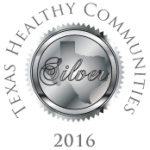 This program helps communities assess their existing environments and implement change in local environmental and policy infrastructure. The program encourages the adoption of priority public health practices to reduce risk factors for chronic diseases. Communities that promote recognized best practices for preventing and controlling cardiovascular disease, stroke and other chronic diseases are then recognized by the program. This year, the Waco-McLennan County Health District has achieved Silver level status for the county for preventing and controlling heart disease, stroke and other chronic diseases. This is an improvement from Honorable Mention in 2014.
This program helps communities assess their existing environments and implement change in local environmental and policy infrastructure. The program encourages the adoption of priority public health practices to reduce risk factors for chronic diseases. Communities that promote recognized best practices for preventing and controlling cardiovascular disease, stroke and other chronic diseases are then recognized by the program. This year, the Waco-McLennan County Health District has achieved Silver level status for the county for preventing and controlling heart disease, stroke and other chronic diseases. This is an improvement from Honorable Mention in 2014.
Communities are assessed on eight health indicators to determine recognition as a Texas Healthy Community: physical activity, healthy food access, mother-friendly worksites, healthy worksites, healthy schools, tobacco control, healthcare quality, and cardiac and stroke response. Some examples of activities within these indicators include:
- Offering physical activity areas
- Offering healthy eating options
- Mother-friendly worksites promoting breastfeeding
- An evidence-based health curriculum in schools
- 100% smoke free city ordinance
- EMS system which maintains a rapid response time for cardiac events
- Treatment of stroke and a medical emergency in the community with appropriate acute stroke treatment protocols in place
The biggest improvements that increased our scores from 2014 included the implementation of the 100% Comprehensive Smoke Free Waco Ordinance passed in July 2015 by City Council that went into effect January 2016 as well as an increase in the number of worksites designated as mother-friendly.
Back in 2014, there were only 2 recognized mother friendly designated worksites whereas in 2016, there are 13 designated mother-friendly worksites. A worksite is considered Mother Friendly if there is a policy in place to support employees choosing to breastfeed their infants. To determine if your worksite could become a mother friendly worksite, you can visit the Texas Mother Friendly Website.
We have received confirmation that we were approved for an additional year of the program funding, which will go towards improvements in several different parks in the city to improve physical activity opportunities for residents. (See the accompanying table for the scores received within each health indicator.) Hopefully, next year, we can reach the Gold Status for the program!
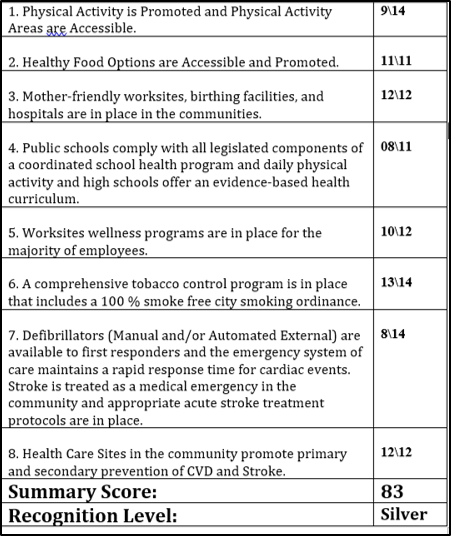
 Courtney Restivo Wollard is a lifelong Waco resident who works as Public Health Education Specialist Lead at the Waco-McLennan County Public Health District and serves as Chair for Live Well Waco, the group working to decrease obesity rates under the Prosper Waco Health Committee Initiative. She is also an alumnus of the Waco Foundation LeadershipPLENTY Institute. Courtney graduated with her Masters of Public Health from Baylor University and right away began her career as a health advocate. She is married to Kyle, with whom she has two fur babies – a Chihuahua and a Labrador. Courtney hopes to continue to create healthier environments for McLennan County residents filled with healthy eating and physical activity opportunities.
Courtney Restivo Wollard is a lifelong Waco resident who works as Public Health Education Specialist Lead at the Waco-McLennan County Public Health District and serves as Chair for Live Well Waco, the group working to decrease obesity rates under the Prosper Waco Health Committee Initiative. She is also an alumnus of the Waco Foundation LeadershipPLENTY Institute. Courtney graduated with her Masters of Public Health from Baylor University and right away began her career as a health advocate. She is married to Kyle, with whom she has two fur babies – a Chihuahua and a Labrador. Courtney hopes to continue to create healthier environments for McLennan County residents filled with healthy eating and physical activity opportunities.
The Act Locally Waco blog publishes posts with a connection to these Aspirations for Waco. If you are interested in writing for the Act Locally Waco Blog, please email [email protected] for more information.
Resources:
https://www.dshs.texas.gov/heart/AbouttheTXHCProgram.aspx
Other communities recognized at the Gold, Silver, Bronze, or Honorable Mention Level this year:
- Gold Level: Harris County, City of Houston, Nueces County, Webb County
- Silver Level: Angelina County, Lubbock County, McLennan County, Smith County, Tom Green County, Wichita County
- Bronze Level: Hidalgo County, Lamar County, Parker County, Taylor County, Victoria County
- Honorable Mention: City of Red Oak, City of Waxahachie, El Paso County, Jasper County, Nacogdoches County, Newton County, Waller County, Wood County
By Rolando Rodriguez Soto
(This post is part of an on-going series about Downtown Waco. In a sense, Downtown is “everybody’s neighborhood.” In this series of blog posts we hope to contribute to the on-going conversation in Waco about what it takes to have a great downtown, and what we want for our own “Wacotown.” To see all the posts in this series, click here: Downtown Waco. – ABT)
This past weekend, I invited two of my good friends to a fun night in Waco. They had never truly experienced downtown! I can’t really judge them. I have lived in Waco for about 20 years, and for most of those years, I only knew downtown as the place with the courthouse and the Alico building. My appreciation for downtown has definitely grown since I started at Baylor. For those two friends and for all Wacoans who are willing to explore the hidden treasures of downtown, I have created an introductory course – The ABC’s of Downtown Waco:
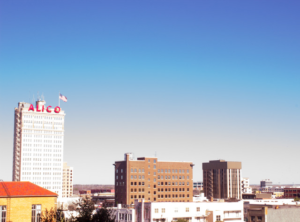 ALICO Building (425 Austin) – The ALICO Building is one of the first skyscrapers in Texas, and it remains the tallest building in Waco. I love driving on Franklin Avenue towards downtown and slowly starting to see the skyscraper peeking above the hill.
ALICO Building (425 Austin) – The ALICO Building is one of the first skyscrapers in Texas, and it remains the tallest building in Waco. I love driving on Franklin Avenue towards downtown and slowly starting to see the skyscraper peeking above the hill.
Balcones Distilling (225 S 11th ST) – Some of the best whiskey in the world is distilled in the old Texas Fireproof Storage Building right here in downtown Waco. Balcones received double gold medals in three different categories at the 2016 New York World Wine and Spirits Competition.
Culture & Arts – Earlier this month, the Texas Commission on the Arts approved the city of Waco’s application for a cultural district designation. Each year Wacoans celebrate culture and art in the annual Cultural Arts Festival in the fall and Art on Elm Avenue in the spring. ( Waco Cultural Arts Festival – usually last weekend in September. Art on Elm, April 7-8, 2017. Creative Waco. )
Dr Pepper Museum (300 S 5th ST) – Waco is home to the oldest major manufacturer of soft drink concentrates and syrups in the United States. It’s always fun exposing fellow connoisseurs of the Dr Pepper brand from out of state to the museum.
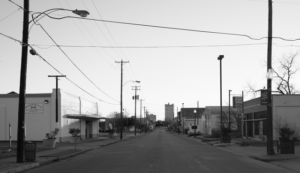 Elm Avenue – When you visit Elm Avenue, the beautiful historic buildings remind you that it was once a thriving business district before a terrible flood in 1936 overwhelmed East Waco. My favorite is to grab a coffee and breakfast pie at Lula Jane’s (406 Elm) and then take pictures with friends around the murals and historic buildings.
Elm Avenue – When you visit Elm Avenue, the beautiful historic buildings remind you that it was once a thriving business district before a terrible flood in 1936 overwhelmed East Waco. My favorite is to grab a coffee and breakfast pie at Lula Jane’s (406 Elm) and then take pictures with friends around the murals and historic buildings.
Farmers’ Market (400 S. University Parks Drive) – Every Saturday morning, you can expect to find the Waco Farmers’ Market behind the old Fire Tower along the Brazos River. Strawberry and Nutella crepes by Co-Town Crepes are my preferred indulgence.
Graffiti, Murals and Art – Elm Avenue isn’t the only place with beautiful art. Some are in plain view in downtown while others will take a little more work to find. Here are a few to get you started: the Martin Luther King Jr. mural (near the Suspension Bridge), the Starry Night mural (corner of 10th St and Columbus Avenue) and the “You Look nice today Wacotown” mural (corner of Sixth St and Washington Avenue).
Hippodrome Theatre (724 Austin Ave) – The Hippodrome is not your typical movie theatre. It comes with a complete full service in-theatre dining and a restaurant and bar overlooking Austin Avenue. They show first run movies, but the best experience is their special movie screenings of older movie favorites. Looking forward to “Rocky Horror Picture Show” coming up in a few weeks! (October 28)
Indian Spring Park (across from the Hilton on University Parks) – As a kid, I remember when Indian Spring Park only had a few longhorns. Now there’s a herd! One thing is for certain, there are definitely more people at the park; I guess we have Pokémon Go to thank for that.
Jake’s Texas Tea House (613 Austin Ave) – In this 50’s themed restaurant, you can always find great banana pudding, and if you’re lucky Elvis and Marilyn Monroe will show up.
Kayaking and Water Activities – There are so many activities to enjoy in the Brazos River including kayaking, wake boarding, fishing or if you’re feeling fancy, you could charter a boat for a tour of the Brazos River. (Bicycle World for canoe/kayak rentals, Waco River Charters)
 Lofts – The historic lofts make the downtown living experience different than any other part of Waco. The historic Waco High campus, many factories and warehouses have all been transformed into beautiful high-end living spaces perfect for young professionals. (Historic Lofts at Waco High – 815 Columbus Ave)
Lofts – The historic lofts make the downtown living experience different than any other part of Waco. The historic Waco High campus, many factories and warehouses have all been transformed into beautiful high-end living spaces perfect for young professionals. (Historic Lofts at Waco High – 815 Columbus Ave)
Magnolia Market (601 Webster Ave) – We can’t talk about downtown without mentioning Chip and Joanna Gaines of “Fixer Upper” fame. No trip to Waco is complete without an obligatory selfie at the Silos.
Nightlife – Downtown Waco has an amazing nightlife with a variety of bars to choose from that all offer a unique experience such as Halftime, Trojans and Crickets. Every first Friday of the month, businesses stay open later than usual for a fun experience with live music and great food. (First Fridays)
Old Buildings – Every building in downtown has a story to tell. The best way to discover the secrets and people behind the buildings is to download the Waco History app on your phone. It allows you to read feature stories on influential people and locations in Waco as well as pinpoint every location on a map so that you can truly experience Waco’s rich past.
Parades – Waco never misses an opportunity to close the streets of downtown for a fun parade. As a kid, my parents took me to downtown to see the Baylor homecoming parade. Little did I know, I would be attending Baylor years later. (Baylor Homecoming Parade – Saturday October 15)
Quack! Quack!: Cameron Park – When I think of Cameron Park, I associate it with quacks as the ducks huddle around the bank of the Brazos River. Throughout the park, you see bikers and joggers, families barbecuing, college students playing disc golf and children laughing as they splash away the hot weather in the spray pad.
River walk: Brazos River – On one side of the river you can enjoy the beauty of Cameron Park while the other side offers Bledsoe-Miller Park and Manny’s on the River as well as Buzzard Billy’s.
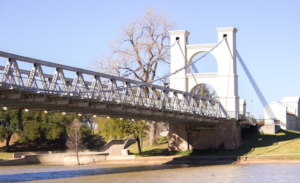 Suspension Bridge – At the edge of downtown, the historic Suspension Bridge connects both sides of town. While you’re on the bridge, bring some tortillas to take your chance at tossing them onto a concrete installment isolated in the Brazos River.
Suspension Bridge – At the edge of downtown, the historic Suspension Bridge connects both sides of town. While you’re on the bridge, bring some tortillas to take your chance at tossing them onto a concrete installment isolated in the Brazos River.
Texas Food Truck Showdown – Three-dozen food trucks invade Heritage Square in the spring to determine which truck truly serves the best food Texas. If you can’t wait until April for the next showdown, you can go down Franklin Avenue on the Brazos River to try out the row of food trucks. (Third Annual Showdown – April 1, 2017)
Upscale Restaurants - As much as we all love our food trucks, farmers markets and fast food, downtown is also a great place to find more upscale restaurants and venues for your special event such as the Phoenix Ballroom, DiamondBack’s or Klassy Glass Wine Bar.
Vendors: Restaurants & Stores – Where’s the middle ground between fast and fancy? While you are in downtown don’t forget to visit Dichotomy, Portofino’s and the shops of River Square Center.
Waco Wonderland – Each year in Heritage Square, there is a holiday parade, ice-skating rink, Ferris wheel, carousel and you can take pictures with Santa Claus. The tree lighting is something truly magnificent. (Waco Wonderland)
Xristo’s Café (Corner of Franklin Avenue and University Parks Dr.) – Xristo’s is a one of a kind mobile café serving southern, Mediterranean and Turkish cuisine.
Youth – Downtown Waco is the perfect environment for any college student, recent graduate or young professional to live in after landing their first job.
Zoo (1701 N 4th ST) – Lastly, while you’re in downtown, venture out a little further to reach Cameron Park Zoo. I only got to experience the zoo as a teenager and an adult, but it is still a fun time getting to see the animals and nature.
 Rolando Rodriguez Soto was raised in Waco, TX, and he is currently attending Baylor University with plans to graduate in December 2016 with a Bachelor of Arts in Professional Writing & Rhetoric. After graduation, he hopes to work in Waco in the nonprofit sector to help realize the full potential of Waco. His long term goals include hopefully creating and publishing creative work whether that is a novel, short story or even a television show.
Rolando Rodriguez Soto was raised in Waco, TX, and he is currently attending Baylor University with plans to graduate in December 2016 with a Bachelor of Arts in Professional Writing & Rhetoric. After graduation, he hopes to work in Waco in the nonprofit sector to help realize the full potential of Waco. His long term goals include hopefully creating and publishing creative work whether that is a novel, short story or even a television show.
The Act Locally Waco blog publishes posts with a connection to these Aspirations for Waco. If you are interested in writing for the Act Locally Waco Blog, please email [email protected] for more information.
By Terry Roller
Waco recently received a Cultural Arts District designation from the State of Texas. To many, it is a great thing. To others it is too esoteric, elitist, and a waste of “their” money.
Let me share a brief story as to why I think it IS a big deal and is deserving of support and nurture, why it brings value to all citizens. My wife is originally from Springfield, Illinois. Her family is still there. I will have to say that over much of the thirty-six years she and I have been married, Springfield, especially being the capital of a state as significant as Illinois, wasn’t much of a place to visit multiple times. There didn’t seem to be much to do once one had done all the obvious Lincoln sites. But for a number of the nearly thirty-four years I have lived in Waco, Springfield had one thing that Waco did not have: a certain department store that shall remain nameless. I really liked the merchandise selection, and the prices, especially sale prices. That gave me something to look forward to when we visited.
Well, in the intervening years, the same department store came to Waco—so much for an incentive to visit Springfield other than visiting in-laws of course. Now, having the same store close to home takes some of the shine off the experience of shopping there. Convenience breeds complacency. This is something I have heard referred to as the “Six Flags effect” which says that if one lives very near Six Flags, it really isn’t a big deal. Even the Bible gives an example in the story of the prophet in his own hometown.
So what does this have to do with the Waco Cultural Arts designation? Large corporations have edged out the mom and pop shops and other small businesses in cities and small towns throughout the country, including Waco. Cities and towns have come to look more and more alike, with the same retailers and restaurants, with the same logo-branded clothing, with the same architecture-as-logo buildings, the same non-descript metal buildings built for economy over aesthetics or style. One remaining unique characteristic that can and does make one community different from others is its local arts scene including, visual and performing arts, music, regional architecture, cultural and historic museums.
Anyone can participate in the arts at whatever level they desire or that their talents or interests allow, whether as artists or performers themselves, as aficionados, collectors, or just as observers or browsers. It isn’t required that one be a Sinatra, or Celine Dion, Madonna, Johnny Cash, Picasso, Whistler, John Wayne, or Meg Ryan, or a Gugenheim level collector. In fact, the broad spectrum of taste, talent and style found in each community adds to its unique artistic nature.
Because tourism is to some degree or other such a vital part of the economy of every town or city, it only makes sense for those communities to make the most of what makes that town or city unique and worth visiting, that make it different from another, even unique. That uniqueness thrives in the local arts scenes. Take Taos, Miami, or New York, for example. Even the nearby small town of Clifton, Texas, benefits greatly from its local arts scene. It is hard to deny that the arts, as a part of Clifton’s economy, far outpaces not only other communities its size, but also that of larger towns and cities. Granbury is another small town example. The citizens and merchants there stage arts and crafts events many times a year drawing substantial numbers of visitors. The more local citizens participate in their own local arts scene, the more they desire to do so in other communities as well, therefore becoming arts tourists and possibly even aficionados.
Now that Waco is a designated Cultural Arts District, it is up to the Waco citizens not only to capitalize on the designation, but also to participate as fully as possible for their own enjoyment. Festivals take effort, volunteers, support, leadership, planning, financing, promotion, and local participation to grow to the point of attracting the attention of those who would travel to Waco to participate. Volunteers or even visitors don’t have to love the arts, just love Waco and want to have a part in its future. And if nothing else, arts events, businesses, and institutions need audiences. It takes solid local audiences to help build the critical mass for others to travel to these events. That is something every citizen can do. They can attend and they can spread the word. Don’t assume because an event is close to home that it can’t be quality.
Kudos to Fiona Bond, Chris McGowan, Megan Henderson, Doreen Ravenscroft, Baylor, MCC, The Waco Art Center, and countless others for all they have done to bring the Cultural Arts District designation about. We have a great start due to the vision, hard work, and dedication of those community leaders mentioned earlier and many others. Anything that benefits the economy, that benefits even a part of a community benefits all citizens of the community. So, let’s go Waco.
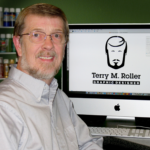 Terry Roller, Prof. Emeritus of Graphic Design, came to Waco after teaching at Eastern Illinois University to take a similar position at Baylor University in 1983. He retired from Baylor after 33 years this August. He has also been a partner and performer in the Stars Over Texas Jamboree, a first-Thursday-of-the-month, Branson-type musical stage show at the Lee Lockwood Library and Museum since its inception in 2010. His wife Janet teaches second grade at Waco Charter school where she also teaches a weekly art class for several grades. They have one daughter, Lauren, who works for Magnolia in public relations.
Terry Roller, Prof. Emeritus of Graphic Design, came to Waco after teaching at Eastern Illinois University to take a similar position at Baylor University in 1983. He retired from Baylor after 33 years this August. He has also been a partner and performer in the Stars Over Texas Jamboree, a first-Thursday-of-the-month, Branson-type musical stage show at the Lee Lockwood Library and Museum since its inception in 2010. His wife Janet teaches second grade at Waco Charter school where she also teaches a weekly art class for several grades. They have one daughter, Lauren, who works for Magnolia in public relations.
The Act Locally Waco blog publishes posts with a connection to these aspirations for Waco. If you are interested in writing for the Act Locally Waco Blog, please email [email protected] for more information.
By Diego Loredo
I know how stressful college can be! It can go from one week of relaxing and not having any work to having a huge amount due in such a short period of time. It can all be overwhelming, and sometimes it’s just too much to handle.
I’ve had numerous experiences of being stressed out during the time I’ve been at UNT so far. I was already stressed out early into this semester when I had to do a communications audit for a nonprofit. The nonprofit ended up not being able to work with me, and I had to find another one and do the audit in a really short period of time. Luckily, I managed to get it done in time. I’ve tried a few things to help manage my stress and here’s a few that I found to be particularly helpful.
Exercise
I usually play soccer with my friends whenever we can all get together. Whether it’s through intramurals or just getting together and kicking a ball around, it always helps clear my mind. It doesn’t have to be soccer though, it can be working out, playing other sports, or just going for a run.
Go out with friends
I know this is pretty obvious but that’s why it’s such a good method to relieve stress. Take time to go out with people that you’re comfortable with. Don’t just stay inside all the time; go out and experience new things. Whenever my friends and I go out, we usually go out of town and find new things to do. These include playing Top Golf, going to the outlets in Allen, or going to a FC Dallas game. Take some time to stop doing so much work and have fun with those close to you.
Manage your time efficiently
Don’t push everything off to the last minute. Try to get it done early or at least a few days before it’s due. Not only will you be stressing out because you procrastinated so much, but it will also affect your grades because you didn’t put as much time into it as you should have. Mark down all of your due dates on the calendar or go to the library once or twice a week to do work. Just make sure you manage when you do school work well.
I know college can be hard and I know sometimes it can be too much to handle. Honestly, it’s just one of those things that comes with going to college. There are going to be stressful days and there are going to be times when you just want to give up. I know how it feels and I’ve been close to giving up several times. Luckily I’ve encountered people who have become close to me and helped me through it all. Also I’ve learned new ways to manage my stress. I’m still learning how to manage my stress well and I hope these tips can help any college student relieve their stress.
 Diego Loredo is a junior at the University of North Texas and is majoring in public relations. He graduated from University High School in 2014. He plans on working in sports PR or for a nonprofit. He loves to play soccer and is a huge FC Dallas fan. Have something that you would like Diego to write about or have a problem that you would like to ask him? Shoot him an email at [email protected].
Diego Loredo is a junior at the University of North Texas and is majoring in public relations. He graduated from University High School in 2014. He plans on working in sports PR or for a nonprofit. He loves to play soccer and is a huge FC Dallas fan. Have something that you would like Diego to write about or have a problem that you would like to ask him? Shoot him an email at [email protected].
The Act Locally Waco blog publishes posts with a connection to these aspirations for Waco. If you are interested in writing for the Act Locally Waco Blog, please email [email protected] for more information.
